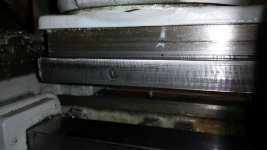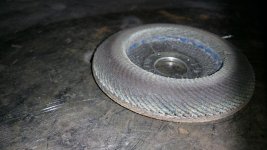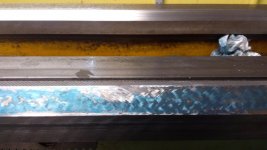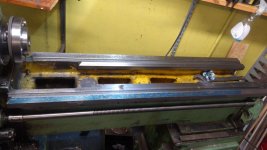Lumberjack
Hot Rolled
- Joined
- Jun 3, 2006
- Location
- Sweden
I started working on a project (lathe) which involves scraping the ways. However soft in the end surfaces they are rather hard in the actual "runways", a bit set-back when discovered but need to push through anyway due to the present wear.
For fun I attached a 3d representation of the ways. Deviations are magnified 1000x
Had I the possibility to have it ground - I would have.
It is scrapable, sort of. But for sure - any harder and it would be a no-go. Material removal rate is Slow and blades dull quickly, covering 50"x2" one pass calls for a touch up on the 1500 or 3000 grit diamond disc. Dull blades don´t need to bother.
So far I´ve concluded best concept to be Biax blades with +5° positive angle 75% speed and approx 10-12 mm stroke length.
Any of you guys who dealt with harder material, do you have any tips on best approach to negotiate this kind of challenge?

For fun I attached a 3d representation of the ways. Deviations are magnified 1000x
Had I the possibility to have it ground - I would have.
It is scrapable, sort of. But for sure - any harder and it would be a no-go. Material removal rate is Slow and blades dull quickly, covering 50"x2" one pass calls for a touch up on the 1500 or 3000 grit diamond disc. Dull blades don´t need to bother.
So far I´ve concluded best concept to be Biax blades with +5° positive angle 75% speed and approx 10-12 mm stroke length.
Any of you guys who dealt with harder material, do you have any tips on best approach to negotiate this kind of challenge?






 .
.

 .
.
